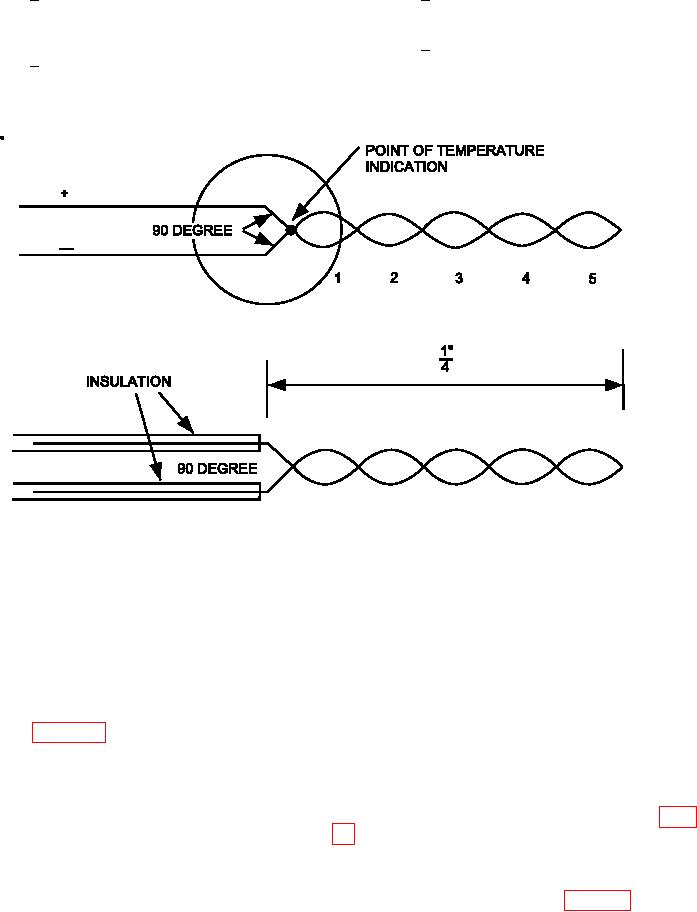
TM 1-1500-204-23-11
2
4
Tightly twist the wire four to ive times
Verify proper operation of the TC prior
and cut off the excess wires to make
to bonding.
contact for the irst time.
Log the information with a data
5
Insure the TC is reading ambient
3
recording system (often, but not
temperatures and reacts to a temper-
always, this is part of a hot bonder or
ature change such as holding it in
oven) or by hand.
your hand.
Figure 3-4. Twisted Thermocouple Wire
j. Vacuum ports. Use one vacuum port for each
highly contoured sections or non-contact cures where
10 ft2 of bagging material. Use one additional vacuum
a heat blanket is not practical. It is dificult to control
port for vacuum gauge. Ensure the ports are placed
the heat applied with a heat lamp during extremes in
over the breather cloth. An extra piece of breather
temperatures or windy conditions. Use of heat lamps
cloth should be placed under the port, especially for
in these conditions shall be avoided.
high temperature or autoclave cures. If necessary,
create an air path by placing a strip of breather cloth
(1) Heat Lamp Variables. Variables that effect
from the vacuum port to the breather cloth on the
part temperature when using heat lamps are discussed
repair. Additional information on vacuum bagging can
below:
be found in Chapter 6.
(a) Lamp Distance. When the heat lamp is
k. Heat Lamps. Heat lamps are heating devices
moved away from the surface, a larger area is heated
that utilize infrared light emission to radiate heat from
but the temperature is reduced. When the heat lamp
the lamp to the part when surface contact with a heat
is moved closer to the surface, a smaller area is
blanket is not possible. Heat lamps are used to heat
heated and the temperature is increased. (See igure
components to assist in low of injection adhesives
3-5 View A). Adjust the distance from the surface to
as well as to reduce the gel time of paste adhesives
ensure required surface temperature is obtained.
and wet layup patches. They are not to be used for
curing wet layup patches or patch bond adhesives
(b) Airlow. Airlow across the surface has
and are limited to temperature applications of 160
a signiicant cooling effect. (See igure 3-5 View B).
F or below on advanced composite parts. Individual
If required, block the airlow by erecting a temporary
heat lamp elements can be arranged in a housing
shelter with materials on hand, such as sheet metal,
with a relector to provide a uniform heating area for
vacuum bag ilm, etc.

